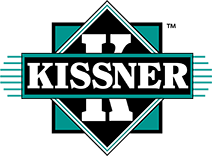Ice Removal
Ice Prevention Strategies
Although most people usually think of ice removal methods only after the first snowfall, it is often worth implementing different ice prevention strategies.
• Snow Mat—this is basically an electric heat-producing mat. It is usually used in entrances, on ramps and on pathways.
• Deicing Agents—various ice melters can be used for preventing the formation of snow and ice. Ice melters are applied on surfaces (such as walkways, sidewalks and driveways) before the snow falls, which prompts the ice and snow to start melting upon contact. Please refer to product information for more details.
Ice Removal Methods
Ice prevention strategies can only go so far. When ice has piled up out of control, it is necessary to use some or all of the ice removal methods available. The following is a list of the current methods being used:
Shoveling
The oldest and least preferred method for ice removal. This technique works best for clearing minimal ice and snow. If you prefer this method but can’t do it alone due to specific circumstances, then calling an ice and snow removal company would be your best choice.
Salt
If the ice that has formed around on your property is not too thick, using salt alone would help to some extent. However, salt alone does not melt to very low temperatures and requires ingredients that are found in ice melter blends to perform effectively.
Snow Blower
This is an electric machine that will help in reducing the mounds of snow and ice that may have formed on your driveway and backyard. It is recommended for urban and suburban homes. It can be helpful to spread ice melter over the cleared area once snow clearing is complete.
Deicer and Ice Melter
For wider coverage and heavier snow piles, shoveling and snow blowing first followed by using an ice melter formulation would be the best choice. However, keep in mind that certain deicers and ice melters contain substances that may be harmful to pavements and plant life. Follow instructions carefully and use ice melters as directed. There are a variety of greener and safer ice melter blends available. Consult your ice melt supplier to ensure you are using the right product for your situation.
Tips for Removing Ice
Removing ice can certainly be a pain for those who have not prepared. That is why before, during, and after using any of the aforementioned ice removal techniques, you might want to observe the following tips:
• Kitty litter and wood ashes are not recommended for ice prevention or ice removal as they produce negligible results and tend to be messy once the temperature drops.
• While sand and grains do not help in melting ice and snow, they can provide better traction over slippery areas and can reduce the chances of slipping.
• Different deicers and ice melters produce different results. It is best to compare ingredients, costs and customer feedback for each type before actually making a purchase.
• Although most deicers and ice melters are advertised as a complete ice removal solution, the best strategy is to use them for reducing ice and then shoveling the thin layer of slush that may remain. This will help you save money and reduce any harmful effects on the landscape and walkways.
Ice removal can be a herculean task. Familiarizing yourself with the different ice removal methods and using them responsibly will certainly be beneficial in the long run. Consider the options above and choose those that will work best for your home or business.
Ice Removal Product Supplier
Contact Kissner, your bulk Ice Removal Product Supplier!



